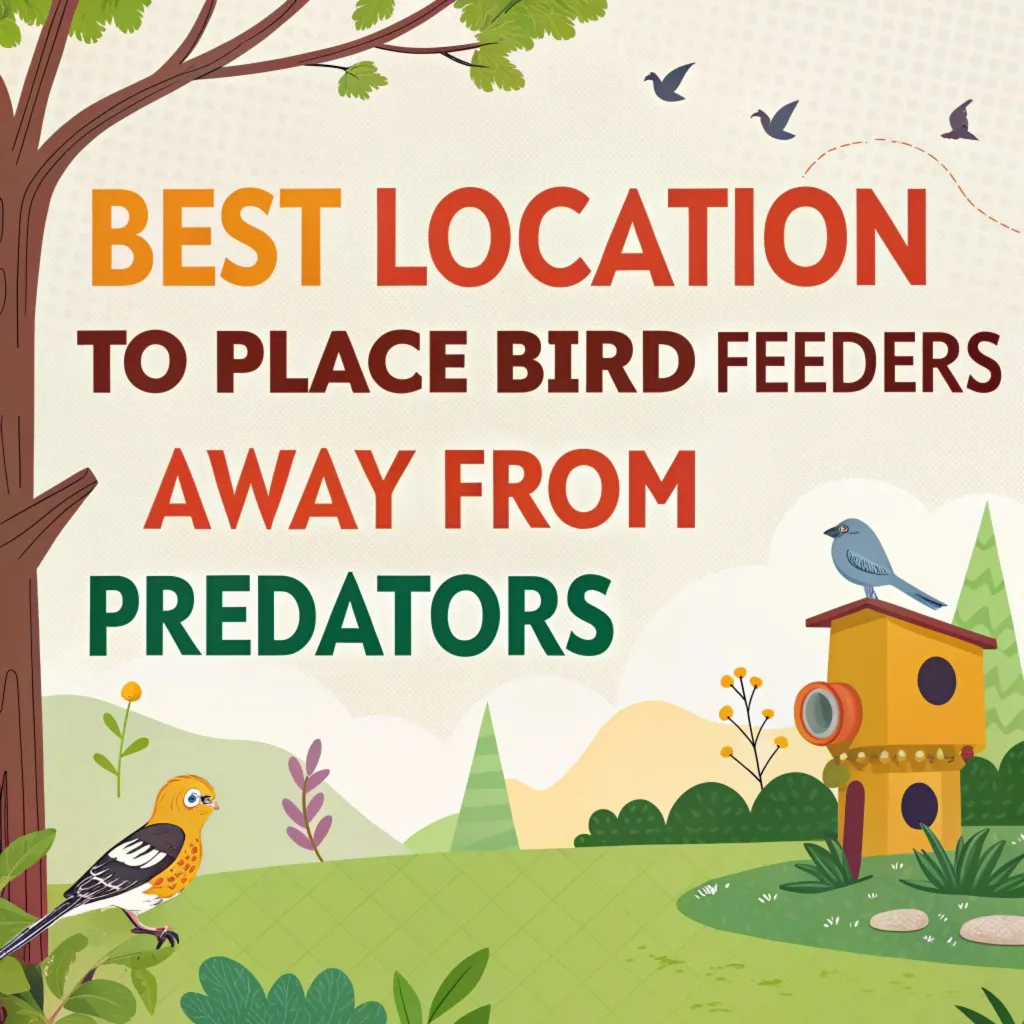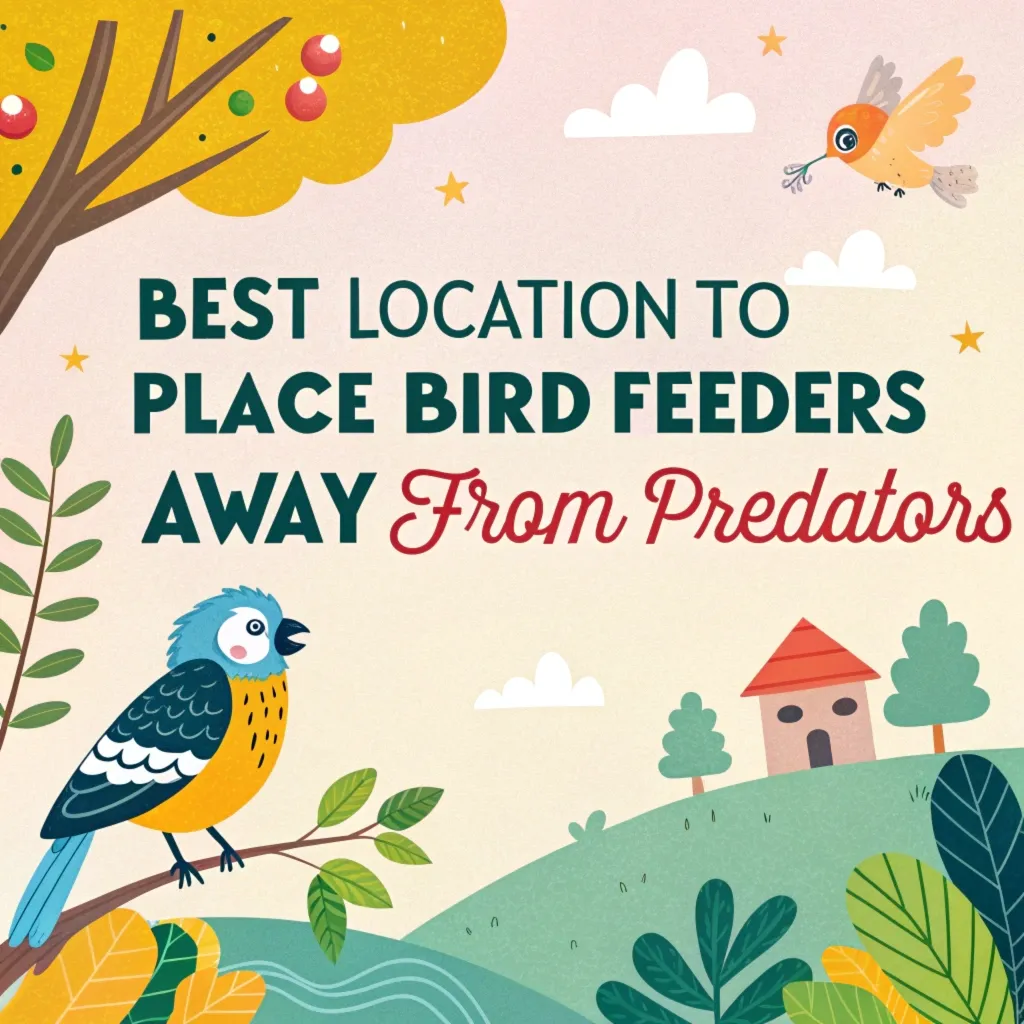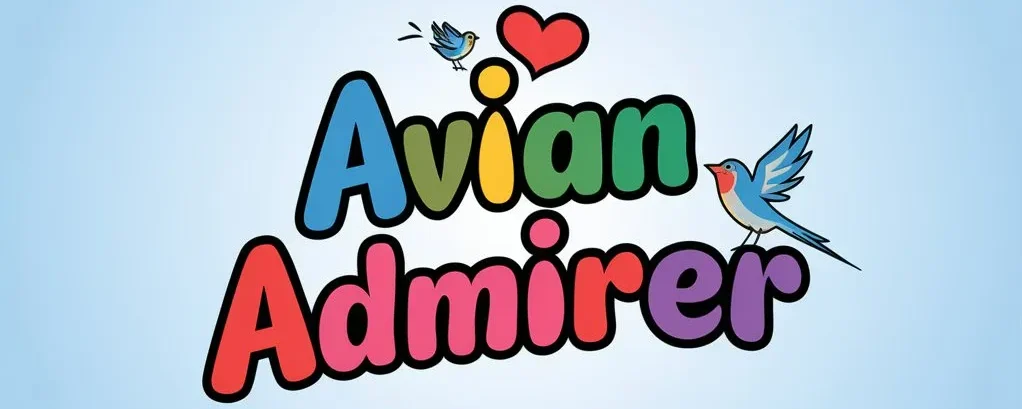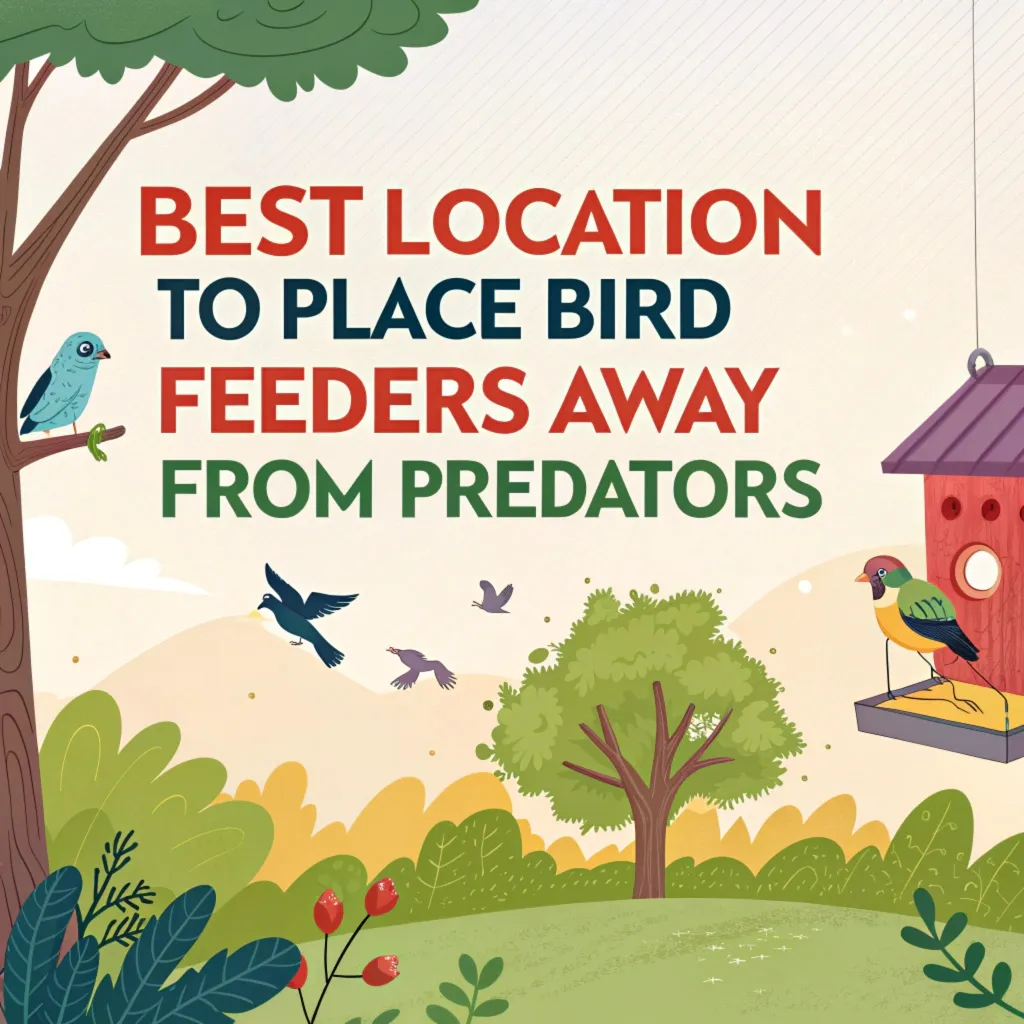What’s the Best Location to Place Bird Feeders Away from Predators?
Feeding birds in your yard can be fun and rewarding. But where should you put your bird feeders? This guide will help you find the best spots to place your feeders.
We’ll show you how to keep birds safe from cats and other dangers. You’ll also learn how to see more birds from your window.
By putting feeders in the right places, you can make your yard a happy home for many birds. Let’s explore how to create a safe bird buffet that both you and the birds will love!
Key Takeaways
- Place feeders 10-12 feet from dense cover to balance safety and visibility
- Position feeders near windows to reduce collision risks
- Provide natural shelter like trees or shrubs for quick escape routes
- Elevate feeders to protect ground-feeding birds
- Use multiple feeder heights to attract diverse bird species
- Avoid areas with high foot traffic or noise
- Consider seasonal adjustments for optimal year-round feeding
- Ensure easy access for cleaning and maintenance
- Place feeders near water sources to attract more birds
- Use baffles or wire fencing to deter larger predators and pests

Safe Distance from Predator Hiding Spots
Birds need to feel secure while feeding. Position feeders 10-12 feet away from dense shrubs, bushes, or structures where predators might hide. This distance allows birds to spot potential threats while providing quick access to cover.
Birds like to feel safe when they eat. Put bird feeders about 10 to 12 feet away from bushes or places where cats or other animals might hide.
This way, birds can see if any danger is near. They can also fly to safety quickly if they need to. This setup helps birds eat without worry.
Natural Shelter Proximity
Place feeders near natural shelter like trees or tall shrubs. This offers birds protection from predators and harsh weather. Aim for a location about 10 feet from trees or large bushes, balancing safety with clear visibility.
Birds need places to hide and stay safe. Put feeders close to trees or big bushes. This gives birds a place to go if they feel scared or if the weather is bad.
Try to put the feeder about 10 feet from a tree. This way, birds can see the feeder clearly but also have a safe place nearby.
Window Placement for Reduced Collisions
Contrary to common belief, placing feeders close to windows can reduce collision risks. Position feeders within 3 feet of windows or even affix them to the glass. This prevents birds from building up speed if they fly towards the window.
Putting bird feeders near windows can help keep birds safe. It might seem strange, but it’s true. Put feeders very close to windows, like 3 feet away or even on the window.
This way, if a bird flies towards the window, it won’t be going fast. This helps stop birds from hitting the window hard and getting hurt.

Elevated Feeding Stations
Raise feeders to protect ground-feeding birds from predators. Hang feeders at least 5 feet above the ground. This height makes it easier for you to fill and clean the feeder while keeping birds safer.
Putting bird feeders up high helps keep birds safe. Hang feeders at least 5 feet off the ground. This makes it hard for cats and other animals to reach the birds.
It also makes it easier for you to fill the feeder and clean it. Birds can eat without worrying about animals sneaking up on them.
Multiple Feeder Heights
Attract diverse bird species by varying feeder heights. Some birds prefer feeding at eye level, while others like higher or lower positions. This strategy increases bird variety in your yard.
Different birds like to eat at different heights. Some birds like to eat high up, while others like to eat lower down.
By putting feeders at different heights, you can get many types of birds to visit. This makes bird watching more fun because you’ll see lots of different birds.
Quiet, Low-Traffic Areas
Birds prefer calm feeding environments. Choose quieter parts of your yard away from busy areas or roads. This allows birds to feed peacefully and enhances your viewing experience.
Birds like quiet places to eat. Put feeders in calm parts of your yard. Stay away from noisy areas or places where people walk a lot.
This helps birds feel safe and relaxed while they eat. It also makes it easier for you to watch the birds without scaring them away.
Seasonal Adjustments
Adapt feeder placement based on seasons. In winter, position feeders closer to your house for shelter. During warmer months, spread feeders across your yard to accommodate plant growth and reduce pest attraction.
The best place for bird feeders can change with the seasons. In winter, put feeders closer to your house. This gives birds some shelter from cold winds.
In spring and summer, move feeders around your yard. This helps birds find food as plants grow. It also stops too many pests from coming to one spot.
Easy Maintenance Access
Select locations that allow for easy cleaning and maintenance. Regular cleaning prevents disease spread among birds. Choose spots you can easily reach for refilling and cleaning.
Put bird feeders where you can reach them easily. You need to clean feeders often to keep birds healthy. Pick spots where you can fill the feeder without trouble.
Make sure you can also clean the feeder without having to climb or stretch too much. This makes taking care of the birds easier for you.

Proximity to Water Sources
Birds are attracted to water. Place feeders near bird baths or water features to increase bird visits. Ensure the water source remains clean and fresh.
Birds love water as much as they love food. Put feeders near bird baths or small ponds if you have them. This makes your yard more inviting to birds.
They can get a drink and take a bath after eating. Remember to keep the water clean and fresh. This will make more birds want to visit your feeders.
Additional Protection Measures
Use baffles on feeder poles to prevent squirrels and other climbing predators from accessing the food. Consider adding wire fencing around feeders to protect smaller birds while allowing them access to the food.
To keep birds extra safe, use special tools. Put baffles on feeder poles. These are like upside-down bowls that stop squirrels from climbing up.
You can also put wire fences around feeders. Make sure the holes are big enough for small birds to get through, but too small for bigger animals. This keeps the little birds safe while they eat.
Feeder Types and Bird Preferences
Different birds like different types of feeders. Platform feeders are good for many birds. Tube feeders work well for small birds. Suet feeders are great for woodpeckers. Use a mix of feeder types to attract more birds.
Birds have favorite types of feeders. Some birds like flat feeders called platform feeders. These are good for many kinds of birds. Small birds like tube feeders.
These are long and thin with small holes. Woodpeckers love suet feeders. These hold special fat blocks. By using different feeders, you can make more types of birds happy and visit your yard.
Predator-Proof Designs
Choose feeders that are hard for predators to reach. Look for feeders with small perches that big animals can’t use. Some feeders close when heavy animals try to get on them. This keeps the food safe for birds.
Some bird feeders are made to keep big animals away. These feeders have small places for birds to sit. Big animals like squirrels can’t hold on to them.
Some cool feeders even close up when something heavy tries to get the food. This means only birds can eat from them. These special feeders help keep the birds safe while they eat.
Night-time Considerations
Many birds don’t eat at night. It’s a good idea to bring feeders inside after dark. This stops night animals from eating all the food. It also keeps the feeder clean and dry.
Most birds sleep at night and don’t eat. You can help birds by taking feeders inside when it gets dark. This stops animals that come out at night from eating all the bird food.
It also keeps the feeder clean and dry. In the morning, put the feeder back outside so birds can have breakfast!
FAQs
How far should bird feeders be from trees?
Place bird feeders about 10 feet away from trees. This distance provides nearby shelter while reducing easy access for squirrels and other pests.
What height is best for hanging bird feeders?
Hang bird feeders approximately 5 feet above the ground. This height balances accessibility for birds with protection from ground predators.
Should I place bird feeders in sunny or shaded areas?
Position bird feeders in partially shaded areas. This protects birds from harsh sunlight while allowing some warmth during cooler months.
How often should I clean my bird feeders?
Clean bird feeders every two weeks, or more frequently during wet weather. Regular cleaning prevents the spread of diseases among birds.
Can I place bird feeders on my patio or deck?
Yes, you can place bird feeders on patios or decks. Ensure they are secured and positioned to minimize mess from fallen seeds.

Ava is a bird enthusiast and nature lover who has spent countless hours observing and learning about the fascinating world of birds. With a passion for sharing her knowledge and inspiring others to appreciate the beauty of birds, Ava writes about her experiences and insights on avianadmirer.com.







